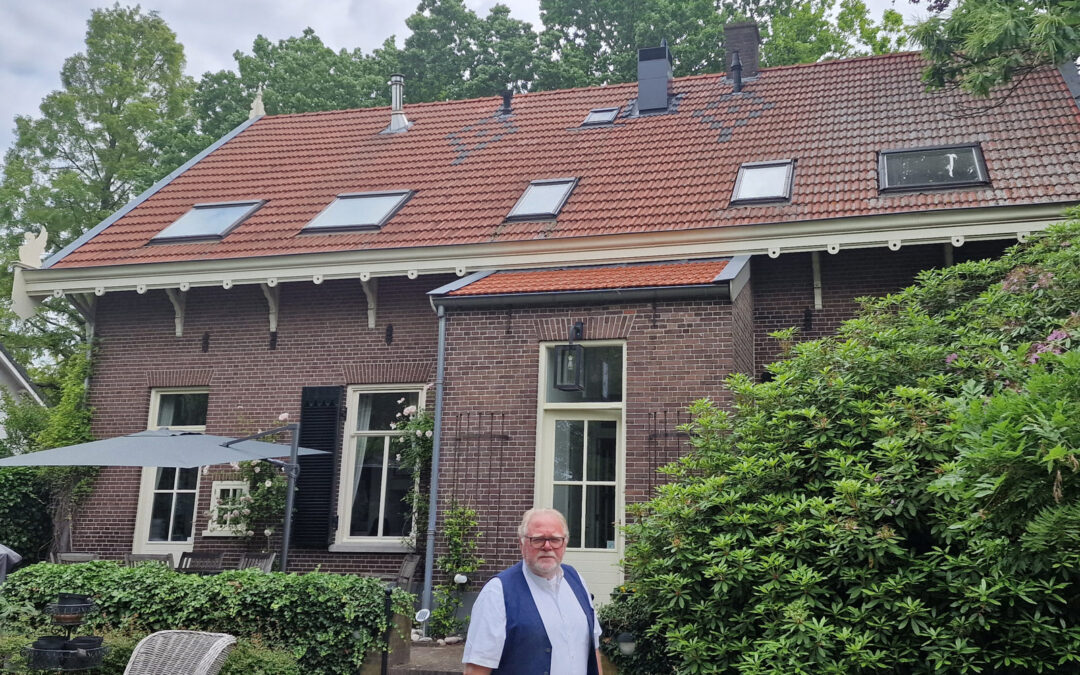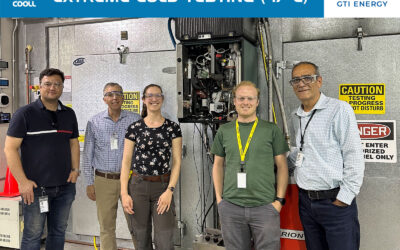How Leo van de Wouw heats his monumental villa with Cooll’s Thermally Driven Heat Pump
For many owners of heritage or monumental buildings, heating their homes efficiently and sustainably is a significant challenge. Renovation possibilities are limited, proper insulation is difficult, conventional heat pumps don’t perform sufficiently, and outdoor units are often aesthetically undesirable. Yet, these homes still need reliable, comfortable heating – preferably with lower gas consumption and lower impact on the environment. That’s the real “job to be done” for people like Leo van de Wouw.
Cooll has developed its adsorption based heat pump technology to offer exactly what these homes need. One of the first prototypes was recently installed at Leo’s home – a historic villa built in 1900 for the mayor of Berlicum, a small town in the Netherlands.
Heating a heritage building
Leo’s home is a textbook example of a monumental property that is difficult to decarbonize. “The roof is insulated, and we’ve installed double glazing throughout, including HR++ windows in the living room,” Leo explains. “But there’s no wall insulation, so further insulation is either impractical or very expensive.”
His home still demands a lot of heat: “There is just the two of us living here, but we heat the kitchen, living room, hallway, and toilet. The traditional gas boiler also provides hot water. Our annual gas usage is between 3,500 and 4,000 cubic meters.” That kind of usage makes going all-electric nearly impossible. “The heating demand is simply too high. A hybrid solution was an option, but it likely wouldn’t save enough energy.”
Why choose for Cooll?
When Leo heard about Cooll’s pilot project, he was immediately intrigued. Cooll’s TDHP solution is designed to deliver high-temperature heating with minimal impact to the house – perfect for older homes with traditional radiators.
“The idea that I could install something without making major changes and still cut my gas consumption by 25 to 40% really appealed to me,” he says. Aesthetics also played a major role. “For me, it was crucial that the appearance of the house remained intact – so absolutely no outdoor unit.”
A careful installation process
The installation itself was handled with great care. “Cooll put together a thoughtful plan that really took our needs into account. The technicians were very friendly and enthusiastic. It was quite a job to get the prototype installed in the attic next to the existing boiler, but they pulled it off.”
The system is operated via a thermostat app. So far, Leo is cautiously optimistic about its performance: “There were a few disturbances early on, so it’s too soon to say exactly what the gas savings will be. But the system runs quietly and reliably now.”
Looking ahead
Leo’s installation is part of a limited demonstration project with 3 out of 7 CE-marked systems through typical houses in the Netherlands. With the successful outcome of this project, Cooll is now preparing for a larger field test with 100 units in 2026. “Since this is a first product prototype and test time has been limited, I can’t yet say much about the payback period. But if it continues to perform well, I’d definitely consider switching to a commercial version of Cooll’s heat pump.”
For Cooll, this pilot is more than just a technical test – it’s a valuable case study that shows where the sweet spots within the residential heating market are. Leo’s story demonstrates that owners of heritage buildings face a unique set of challenges in the energy transition, but they can still decarbonize their properties significantly through an easy appliance replacement with Cooll’s technology.






